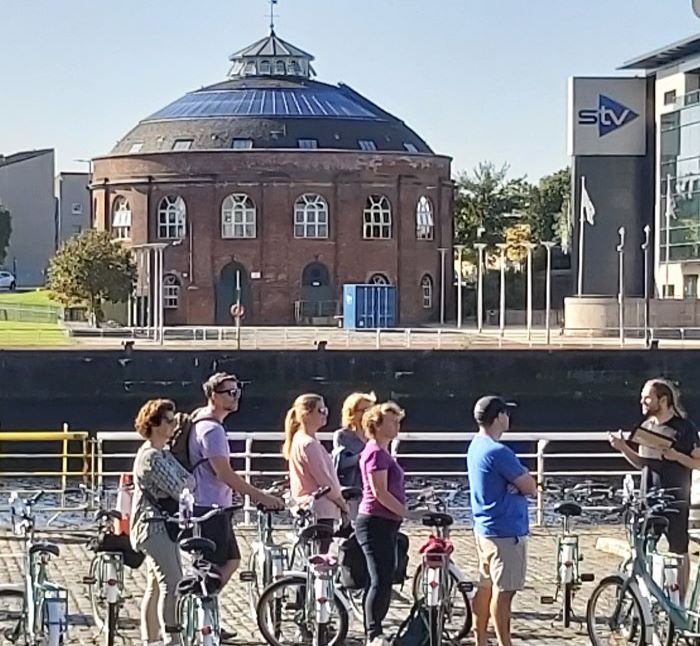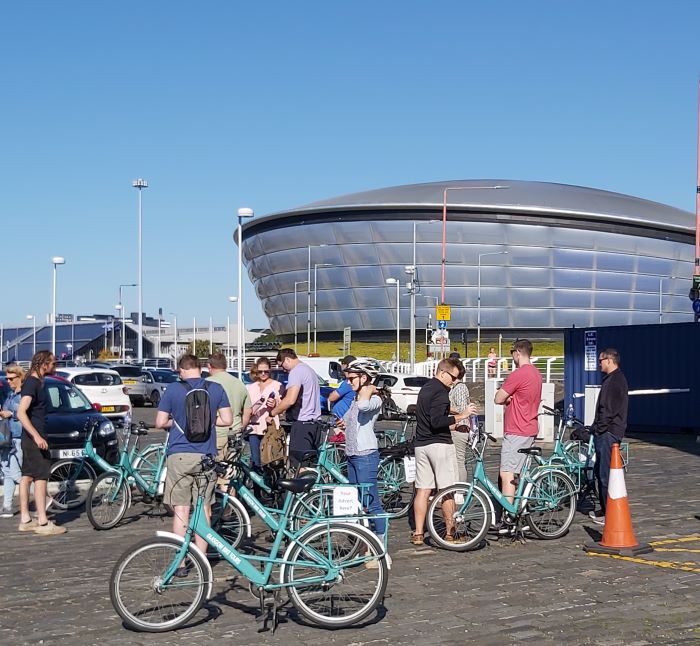The Glasgow City Sightseeing Tour
The classic city bike tour
Setting off by bike from the Drygate (one of Glasgow’s best micro-breweries), you will pedal down to the People’s Palace on Glasgow Green, before cycling along the Clyde Water front, surrounded by post industrial architecture and stunning Victorian sandstone buildings, before making your way to Glasgow’s chic West-end, through Kelvingrove park, past Glasgow University, following beautiful waterways and cultural highlights, before returning to Glasgow’s historical centre at Glasgow Cathedral and the scene of the Battle o’ the Bell o’ the Brae and finally back to the end of the tour in the Glasgow’s East End, where craft beer/wine/whisky and great food are not in short supply.
Tour Information
Duration: 2.5 hours – very easy route
Includes: Guide, bike, helmet and tasty Glasgow treat.
Cost: £43 per person, Discount for groups – Get in touch
Student/U’25s £39, £35 per child/U’16*
Bring your own bike and get £5 off.
Need an exclusive tour or e-bike?..Get in touch.
Schedule: 10am & 2.30pm (10am only in winter)
Booking essential.
See T&Cs
Sightseeing Bike Tour Hotspots
- The People’s Palace and Winter Gardens. Located in Glasgow Green, life in Glasgow can be traced between the 1800s and present day.
- The Clyde Auditorium. Locally known as the Armadillo, this building is one of the most recognisable structures on the river Clyde and was built to increase the capacity of the SECC.
- The Finnieston Crane. One of the most iconic structures on the Glasgow skyline, is retained as a testament to the tradition of engineering on the Clyde river.
- The West End. Glasgow’s world renowned “chic” centre.
- Kelvingrove Art Gallery. Located on the banks of the Kelvin river, this is a breathtaking building and is the most visited free to enter tourist attraction in Scotland. A must see for any visitor.
- Glasgow University. As the 2nd oldest university in Scotland, Glasgow University is linked to Glasgow Cathedral in that its early teachings started there and the university eventually being given papal approval in 1451. Another fantastic and impressive building.
- The Forth and Clyde Canal and Speirs Wharf. Completed in 1790 and connecting the east and west coast seas of Scotland.
- Glasgow Cathedral and Provand’s Lordship. Constructed around 1471 and 1ocated in the centre of Glasgow, next to the Royal Infirmary, these represent 2 of the last examples of medieval buildings in Glasgow. The Cathedral is linked to St Mungo, whose name is synonymous with Glasgow.
- Glasgow Necropolis. This is a classic example of Victorian cemeteries, unusually built on a low hill and has been describe as “literally a city of the dead” and is home to some 50,000 graves.


